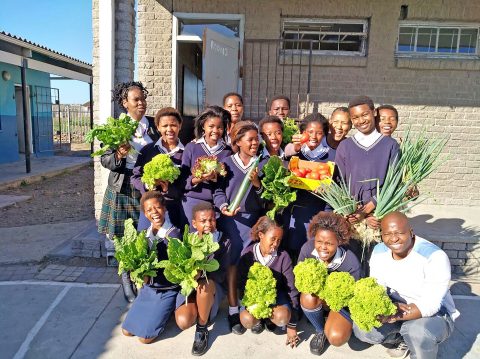World Food Day
Looming Famine Requires Food Consumption Reset
It’s estimated that globally, at least 930 million tonnes of food are wasted or lost annually, of which 61 per cent is at the household level, 26 per cent from food services (post-harvest processing) and 13 per cent from retail. This indicates that close to 20 per cent of global food production is wasted.
Prof Albert Modi, deputy vice-chancellor and head of the University of KwaZulu-Natal’s College of Agriculture, Engineering and Science, says South Africa urgently needs innovation to reduce food waste and loss between farm and fork.
As most of South Africa’s food is produced by commercial farmers using sophisticated post-harvest technology, food loss in the domestic context is estimated mainly between the retailer and the household. “While the global average per capita per year is 74kg, in South Africa, the reasonable estimate of food loss in this context would be about 40kg,” says Prof Modi. “There are a range of added food-loss drivers from the commercial farm to the dinner table, which can result in at least an extra 40 per cent of a crop being rendered unsuitable for consumption, depending on whether it’s for domestic or export use. These could include delayed transport, poor storage facilities or bad on-farm practices.”
To reduce food waste on a macro level, Prof Modi says that rail and transport capabilities in the country require improvement, and the value chain should be shortened to provide space for subsistence farmers and allow for direct sales between producers and consumers.
A growing problem
A 2021 study conducted by the Council for Science and Industrial Research shows that food waste at consumption level has increased threefold since 2013, coming in at 34 per cent of local food production. Cereals contribute to the largest portion, followed by vegetables, fruit and then meat. Considering that food production would need to double in coming years to feed a growing population, solving food waste is a critical part of increasing food availability. It will also go a long way to reducing the environmental burden of farming, since the energy that is required to produce this wasted food could power Johannesburg for around 16 weeks, and the water could fill 600 000 Olympic swimming pools.
The use of a “sell-by date” on produce requires education, Prof Modi notes. “There is a difference between ‘sell-by date’ and ‘use-by date’. Encouraging consumers to buy food close to its ‘sell-by date’ while educating them on using it immediately or how to store it a little longer under low temperature conditions will help.”
Creating space for those with little or low income requires innovative thinking around the development of low-price exits for this food. “Charities and food kitchens would welcome this food and government should reward such initiatives,” says Prof Modi.
“To reduce the risk of famine, particularly in South Africa, we must encourage small-scale commercial farming backed by the development of fresh produce markets that sell directly to the consumer,” Prof Modi adds. “This will require investment in extension services, and the identification of drought-tolerant crops and those traditional crops that are underutilised by retailers. The recycling of food waste into compost is also a critical component of improved food supply.”





